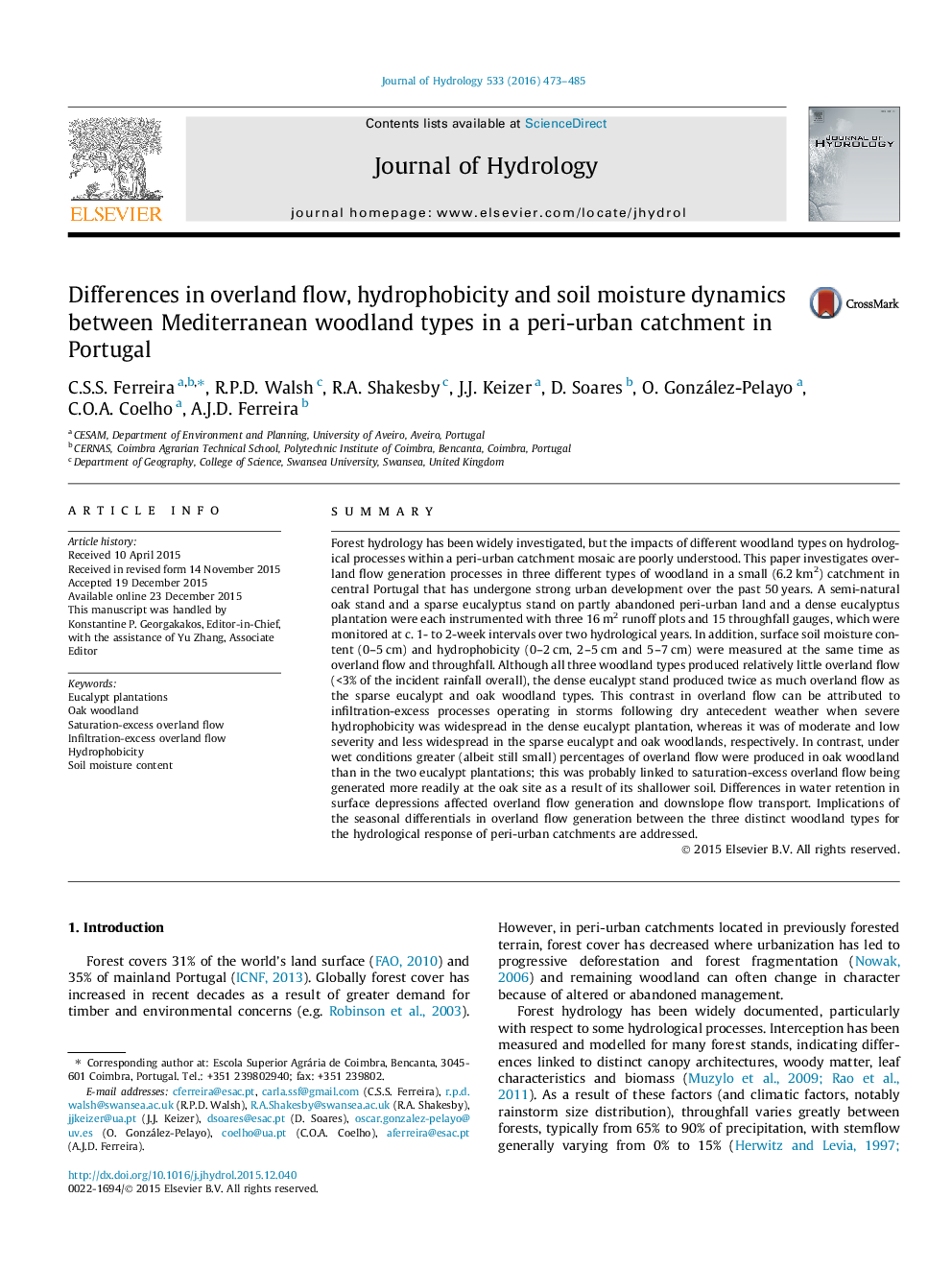| کد مقاله | کد نشریه | سال انتشار | مقاله انگلیسی | نسخه تمام متن |
|---|---|---|---|---|
| 6410538 | 1629919 | 2016 | 13 صفحه PDF | دانلود رایگان |
- Overland flow differences between dense eucalypt, sparse eucalypt and oak stands.
- Dense eucalypt plantation provides greater overland flow.
- Hydrophobicity enhances infiltration-excess overland flow in dense eucalypt stands.
- Long-lasting rainfall events favour overland flow in sparse eucalypt and oak stands.
- Woodland areas as sources and sinks of overland flow in peri-urban catchments.
SummaryForest hydrology has been widely investigated, but the impacts of different woodland types on hydrological processes within a peri-urban catchment mosaic are poorly understood. This paper investigates overland flow generation processes in three different types of woodland in a small (6.2Â km2) catchment in central Portugal that has undergone strong urban development over the past 50Â years. A semi-natural oak stand and a sparse eucalyptus stand on partly abandoned peri-urban land and a dense eucalyptus plantation were each instrumented with three 16Â m2 runoff plots and 15 throughfall gauges, which were monitored at c. 1- to 2-week intervals over two hydrological years. In addition, surface soil moisture content (0-5Â cm) and hydrophobicity (0-2Â cm, 2-5Â cm and 5-7Â cm) were measured at the same time as overland flow and throughfall. Although all three woodland types produced relatively little overland flow (<3% of the incident rainfall overall), the dense eucalypt stand produced twice as much overland flow as the sparse eucalypt and oak woodland types. This contrast in overland flow can be attributed to infiltration-excess processes operating in storms following dry antecedent weather when severe hydrophobicity was widespread in the dense eucalypt plantation, whereas it was of moderate and low severity and less widespread in the sparse eucalypt and oak woodlands, respectively. In contrast, under wet conditions greater (albeit still small) percentages of overland flow were produced in oak woodland than in the two eucalypt plantations; this was probably linked to saturation-excess overland flow being generated more readily at the oak site as a result of its shallower soil. Differences in water retention in surface depressions affected overland flow generation and downslope flow transport. Implications of the seasonal differentials in overland flow generation between the three distinct woodland types for the hydrological response of peri-urban catchments are addressed.
Journal: Journal of Hydrology - Volume 533, February 2016, Pages 473-485
